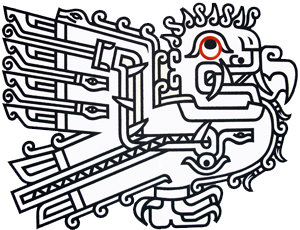Maximilien Bruggmann calls his apartment in Yverdon-les-Bains his «biotope»: Here he finds the stability that any world traveller needs. Here is his anchorage, his home, a place to feed and entertain friends and an archive for his photos: the safe haven to which he has returned from each of his sixty trips around the globe.
To the visitor, this biotope, this «Manoir» (villa) of Maximilien’s is more like Ali Baba´s treasure chamber. What can one discover there? A jumble of daily-use objects brought back by the photographer from his travels: Vinyl records of folk, jazz and classical music, paintings by Bruggmann the artist, a few posters of his photo exhibitions, shelves with all of his illustrated books, boxes with his photo archives in the form of slides, contact sheets, notebooks... But also human warmth and a kitchen where everything is always ready to pamper guests. You can see and feel that Maximilien Bruggmann has had a full life.

Born in 1934 in Entlebuch, Lucerne, he attended the graphics department at the School of Applied Arts in Lucerne, and then in Bern. At the age of 23, his fascination for the mountains took him on an adventurous journey to Africa, that Africa which would mark him for the rest of his life. He started out hitchhiking in Lausanne – where he worked as a graphic artist – with the summit of Mount Kilimanjaro as a target, which he reached after months of wandering as he travelled through the African continent on foot. However, as with any trip, the destination is only part of the story. It is the journey itself that brings you further and changes you, and it is thanks to it that travelling finds its true meaning. For Maximilien, this journey was the beginning of a long love story with a landscape form which has remained his passion until this day: the largest dry desert in the world, the Sahara – its vastness, its engravings and rock paintings, as well as the Blue People, the Tuareg.
Maximilien then published his first photo book. An artist was born. With his lens he has portrayed primarily the Sahara, but also the National Exhibition of 1964, Argentina, Belgium, the Valais, Egypt, Finland and the legendary Spice Route, becoming one of the most important Swiss photographers. He made a film, «Ombres Bleues du Tassili», in which the everyday life of a Saharan people transforms into a poem. In the year of his 75th birthday, the time had come for a public institution to honour this humble personality, whose pictures have graced many calendars for Swissair and Unesco, by means of a retrospective exhibit. His images remind us of an era that is simultaneously very close and very far away, a lost paradise where the humanity of people around the world fraternize beyond borders and fundamentalism.
It is difficult to talk about Maximilien’s photos, as the themes he addresses and the areas he has visited are so numerous. However, if there is an art form which he exercises with devotion, it is the portraits. Whether candid snapshots or carefully staged poses, the proud, aristocratic look of his subjects testifies to the tact with which the photographer approaches them. A striking contrast to these soulful faces are the masks of which he has taken pictures in the icy regions of Canada, at museums in Egypt, at the Carnival in Loetschental or the Carnival in Venice. Then the huge, magnificent sceneries with mountains and sand dunes, but also recordings of great scientific importance documenting rock paintings and engravings in the Sahara (where he carried out pioneering and exploration work). In all these images the graphic designer is also present, documenting the birth of the Arts.
While the exhibition is on, Maximilien Bruggmann resides in his Manoir of Martigny. Visitors are invited to discover the many facets of this man, his working methods, his travels, his dreams and visions of the world, as well as the «habitat» in which all of this came to be. Here we can gain an insight into the practical side of his work, encounter a complex and compelling personality, whose relentless pursuit of perfection offers us one of the richest and most moving works of photography in Switzerland.
Oliver Schinz, curator





